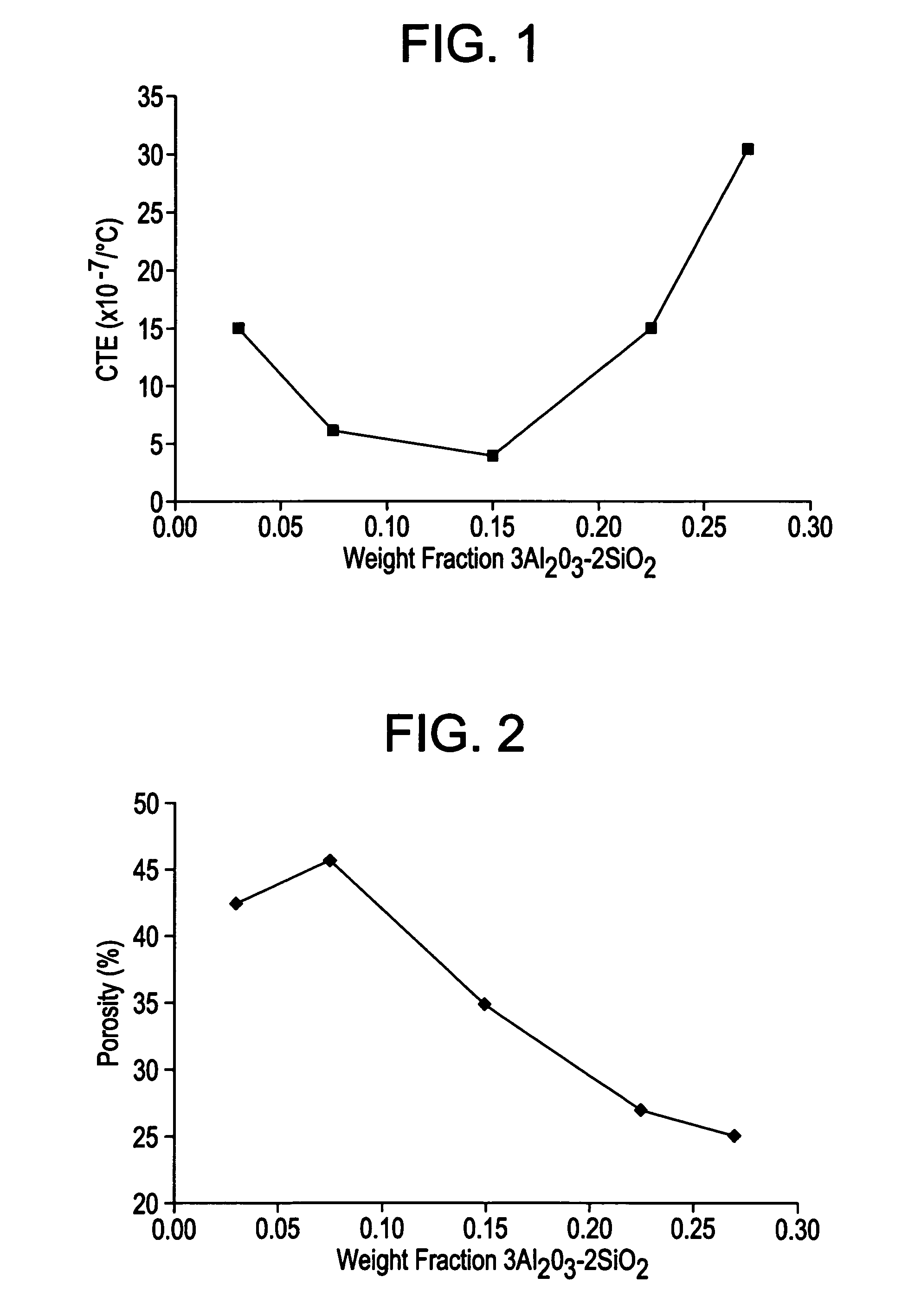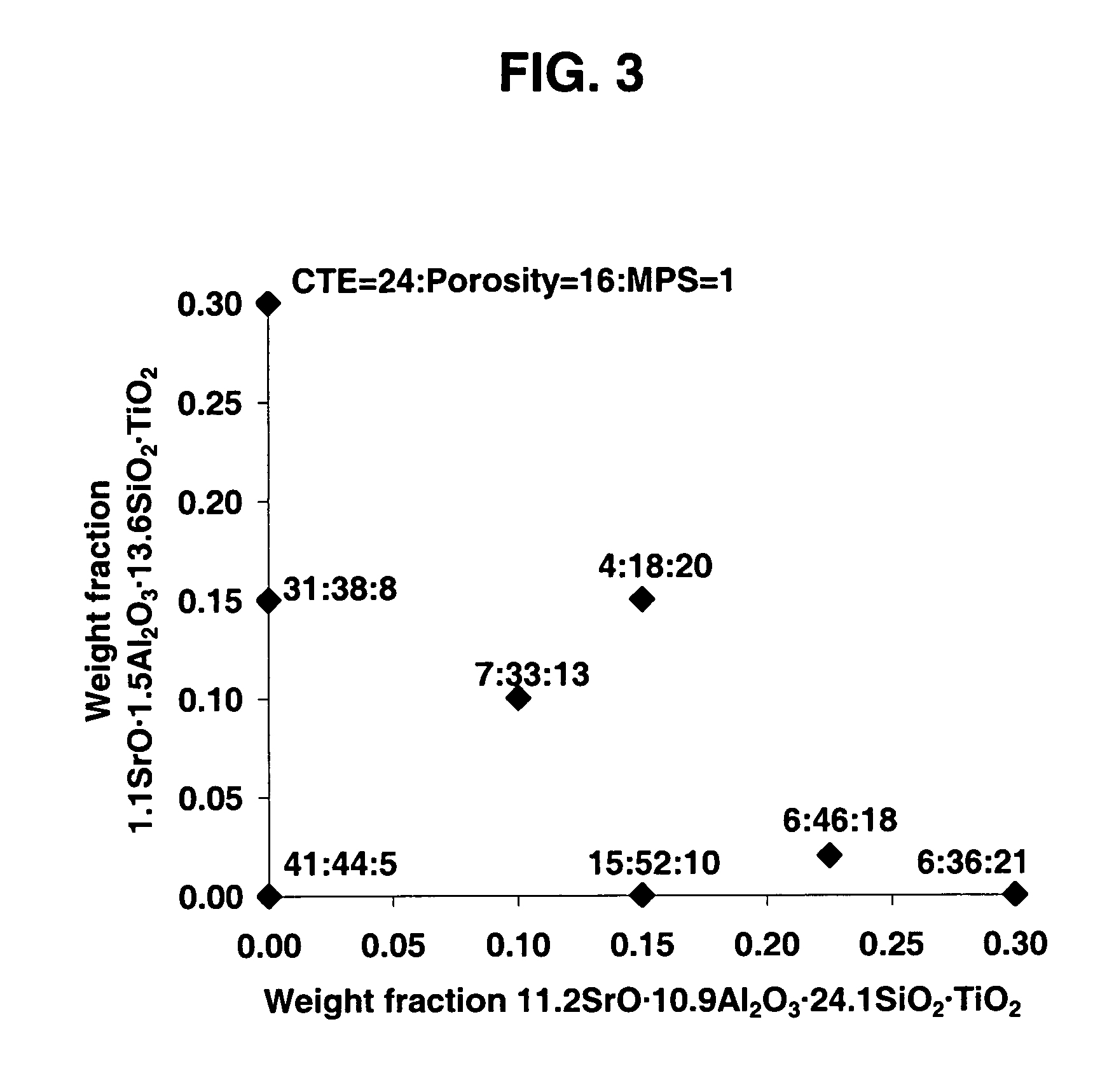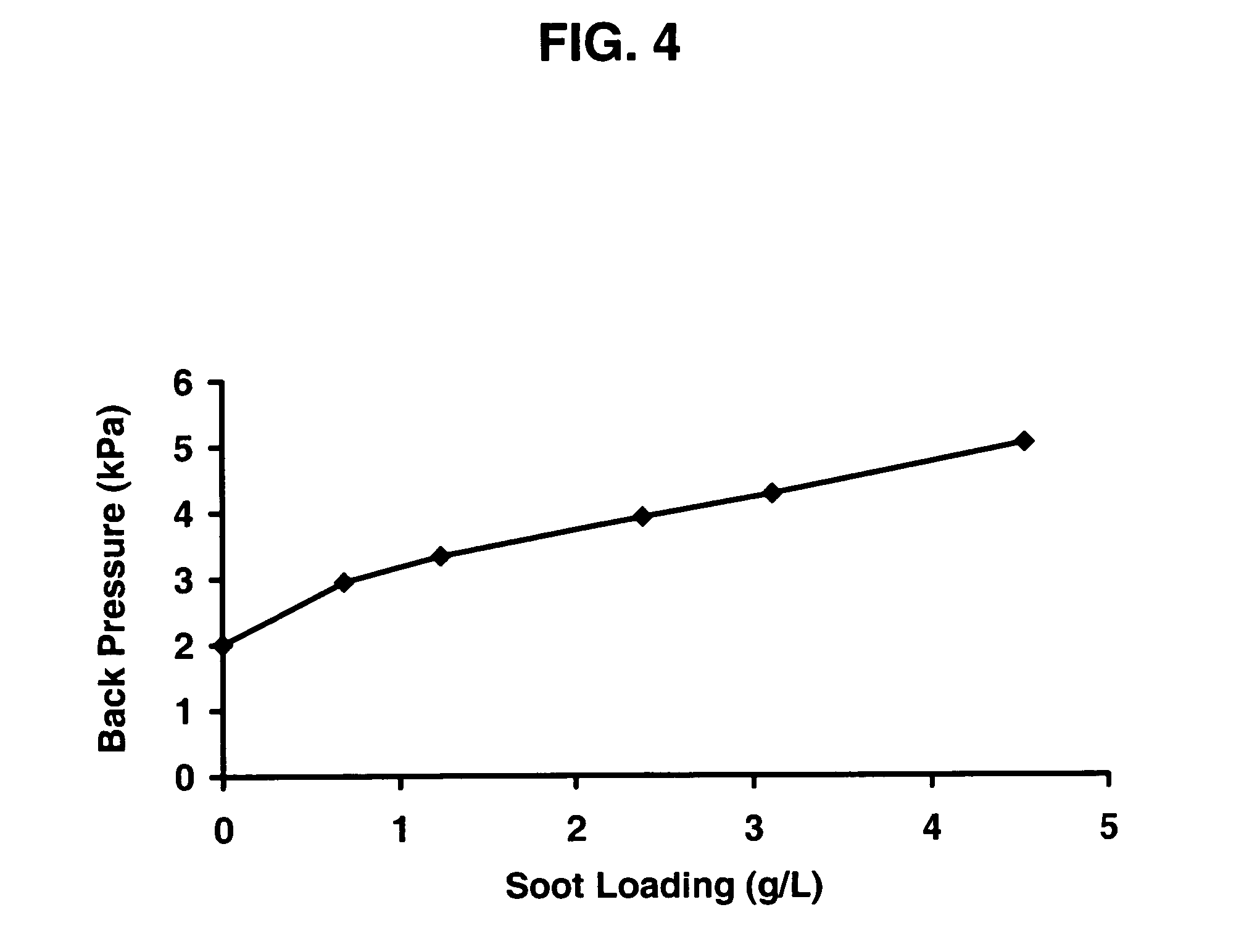Aluminum titanate-based ceramic article
a technology of ceramic articles and titanate, applied in the field of aluminum titanate-based ceramic articles, can solve the problems of localized cordierite melting, catastrophic failure, and easy damage of cordierite filters, and achieve the effects of reducing manufacturing costs, low thermal expansion, and high thermal shock resistan
- Summary
- Abstract
- Description
- Claims
- Application Information
AI Technical Summary
Benefits of technology
Problems solved by technology
Method used
Image
Examples
examples
[0034]Inventive samples are prepared by weighing out the dry ingredients, mixing them with organic components and water, and kneading the mixture in a stainless steel muller to form a plastic mass. Table I provides parts and proportions for the powdered raw materials and forming aids. Specifically, triethanolamine (TEA) is first mixed with water, and then with oleic acid and / or tall oil (dispersant). The resulting solution is stored at room temperature for 24 hours and then refrigerated overnight prior to use. The dry ingredients which include silica, titania, strontium carbonate, iron oxide, alumina, alumina hydroxide, silicone resin, graphite, polyethylene beads and / or methyl cellulose binder are dry mixed in a muller. The tall oil / TEA / water solution is slowly added during continuous mixing to provide homogenization and plasticization.
[0035]The plasticized mixture is extruded through a die into honeycomb bodies having approximately 100 to 400 cpsi and a wall thickness of about 0.0...
PUM
| Property | Measurement | Unit |
|---|---|---|
| Temperature | aaaaa | aaaaa |
| Temperature | aaaaa | aaaaa |
| Temperature | aaaaa | aaaaa |
Abstract
Description
Claims
Application Information
 Login to View More
Login to View More - R&D
- Intellectual Property
- Life Sciences
- Materials
- Tech Scout
- Unparalleled Data Quality
- Higher Quality Content
- 60% Fewer Hallucinations
Browse by: Latest US Patents, China's latest patents, Technical Efficacy Thesaurus, Application Domain, Technology Topic, Popular Technical Reports.
© 2025 PatSnap. All rights reserved.Legal|Privacy policy|Modern Slavery Act Transparency Statement|Sitemap|About US| Contact US: help@patsnap.com



